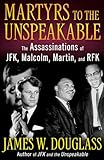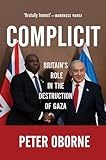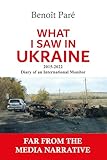No person can calculate the greatness of the evil to transform the citizens of a peaceful, industrious republic into a band of furious soldiers; and yet the unhappy policy of nations is to cultivate a martial spirit that they may appear grand, powerful, and terrific, when in fact they are kindling flames that will eventually burn them up root and branch.
— David Low Dodge, American activist and theologian, War Inconsistent with the Religion of Jesus Christ (1815)
The term “terrorism” has long assumed a role in political discourse just as useful for its slippery definition as it is for its geopolitical utility. The lack of a single, authoritative definition of terrorism—political scientist Alex Schmid compiled over one hundred working definitions of the term for a research paper in 1984— allows for its strategic application by various actors.
Defining terrorism necessitates a comparison with other forms of political violence, such as war and guerrilla warfare. Schmid has offered the definition of terrorism as the “peacetime equivalent of war crimes”. While international conventions for the suppression of terrorism further define it as acts intended to cause death or serious injury to civilians or damage to infrastructure for political purposes, the UN general assembly in 1982 “reaffirm(ed) the legitimacy of the struggle of peoples for independence, territorial integrity, national unity and liberation from colonial and foreign domination and foreign occupation by all available means, including armed struggle.”
The practical impact of those who cause terror to a population is to induce fear in that population—the better defined the identity of a terrorist or group of terrorists, the better defined and constrained who the terrorized population will fear. Traditional warfare legally requires identifiable state or non-state belligerents. The ‘War on Terror’ framework cleverly circumvented this by naming a diffuse, vaguely defined adversary (‘Terror,’ often implicitly or explicitly linked to groups like Islamists or Arabs), allowing for broad military action without the constraints of targeting a specific, delineated enemy.
This approach to defining the enemy as existing in such undefined bounds has an inherent propensity to cause civilian casualties. Civilian casualties in counterterrorism operations often serve as a catalyst for radicalization by fostering grievances, delegitimizing governing authorities, and providing extremist groups with powerful recruitment narratives. This cycle of violence perpetuates instability, as affected populations increasingly turn to insurgent or terrorist organizations in response to perceived injustice and lack of security.
War on Terror
Our job was all about keeping the focus on national security and specifically the war on terrorism, which would become the central theme of the president’s reelection campaign.
— Scott McClellan, George W. Bush Press Secretary 2003-2006, What Happened: Inside the Bush White House and Washington’s Culture of Deception (2008)
The day after the attacks on the twin towers on September 11, 2001, President George W. Bush, despite no knowledge of perpetrators’ identity, “The deliberate and deadly attacks which were carried out yesterday against our country were more than acts of terror. They were acts of war.”
Framing 9/11 as ‘war’ rather than a crime was crucial. It allowed the President to assume expanded Commander-in-Chief powers, bypass normal legal frameworks (domestic or international), and set precedents for future power grabs.
Being a war, the US could ignore the pretense of solving a crime. As the late author and professor, Graeme MacQueen points out in his book The 2001 Anthrax Deception:
The Taliban, who formed the de facto government in Afghanistan, indicated they would be willing to cooperate in a legal proceeding. When Osama Bin Laden [the head of Al Qaeda who operated out of Afghanistan] was accused of the deed by the U.S. government, they offered at various times to hand him over for trial if the U.S. would supply some evidence of his guilt. From the perspective of law this was an entirely reasonable request. No credible evidence had been presented. Bin Laden had not been formally charged with the crime by the FBI (nor, for that matter, would he ever be charged for the crime of 9/11).
Instead, the crime was principally investigated by starting with a known perpetrator. Secretary of state Condoleezza Rice explained in a 2002 interview with Frontline that the afternoon of September 11, the National Security Council met and—”Everybody assumed that it was Al Qaeda, because the operation looked like Al Qaeda, quacked like Al Qaeda, seemed like Al Qaeda.” Such ornithological certainty apparently settled the matter. The US declared war on Afghanistan on October 7.
In the same meeting late on September 11, according to journalist Bob Woodward, Secretary of Defense Donald Rumsfeld suggested, “Part of our response maybe should be attacking Iraq. It’s an opportunity.”
It was an opportunity not to be wasted for mere lack of evidence or relevance.
Indeed, the administration would speak into existence a close relationship between Al Qaeda and Iraq in spite of all evidence. Above all, this connection was based upon Iraq’s supposed implications in the Anthrax attacks of 2001.
The narrative connecting Iraq to terrorism, especially bio-terrorism, was actively shaped in the media during the Fall 2001 Anthrax scare (infecting 22, killing 5). Judith Miller, a high-profile New York Times reporter whose book “Germs: Biological Weapons and America’s Secret War” had just been published, played a notable role.
Her articles during this period would consistently lend credence to potential Iraqi links, for instance, by quoting experts who insisted the “Baghdad thesis… should not be dismissed as a desperate reach for a casus belli against Iraq” even as forensic evidence pointed squarely toward a domestic origin.
The actual evidence remained stubbornly uncooperative, but the War on Terror—helpfully abstract and geographically unbound—required no such inconvenient specifics.
Leading up to the 2003 Iraq invasion, she became a primary conduit for the administration’s claims and reports from questionable Iraqi exile groups alleging Saddam Hussein possessed active WMD programs. After the invasion failed to uncover such weapons, Miller’s reporting methods and reliance on compromised sources ultimately led the New York Times to concede in a May 2004 editor’s note that its coverage had been insufficiently critical and relied too heavily on sources pushing for war.
Amidst this fallout and further controversy regarding source protection, Miller resigned from the Times in 2005. Her work exemplifies how media can amplify official narratives, particularly concerning ambiguous threats like terrorism, with significant geopolitical consequences.
The Anthrax attacks led to a significant increase in homeland security measures and the passage of legislation like the USA PATRIOT Act, which broadened government surveillance and investigative powers in the name of counterterrorism.
Still absent any connection between anthrax and foreign actors, or between Iraq and Afghanistan, Bush announced in October 2002 he had run out of patience waiting for a rationale to go to war Lacking a smoking gun, Bush invoked the specter of one, warning Congress, “Facing clear evidence of peril, we cannot wait for the final proof – the smoking gun – that could come in the form of a mushroom cloud.”
There would be no evidence uncovered to provide the casus belli against Iraq or Afghanistan. But the war was on terror—an enemy as well defined as the evidence against it. The casualties were more quantifiable— according to the Cost of War Project, the war in Afghanistan between 2001 and 2021 killed about 176,000 individuals, with civilians representing at least a quarter of the count. During the 20 year intervention in Iraq between 2003 and 2023, casualties numbered about a quarter million, more than 2/3 of whom were civilians. [Some would call this an extremely low-ball estimate, as John Hopkins epidemiologists estimated in a 2006 Lancet paper that there were 655,000 excess mortalities — not casualties — due to war in Iraq. In 2007, Opinion Research Business put the number at 1.2 million Iraqi deaths. — DV ed]
By framing a group or activity as terrorism, governments can invoke a different set of legal and strategic frameworks, allowing for the use of military force, which typically has fewer legal constraints and a higher threshold for intervention than domestic law enforcement. This shift in framing can lead to the militarization of issues that might be more appropriately addressed through other means.
Gaza
Defenders of Israeli actions frequently argue that the Palestinian education system incites hatred towards Jews and violence, denies Israel’s right to exist, and thus perpetuates the conflict:
Palestinians are taught to hate. They are educated to murder. They are told that martyrdom and Jihad is the only way.
— Gilad Erda, Israeli Ambassador to the United Nations (UN), Speech to the United Nations Security Council, June 27, 2023
By that date, at least 137 Palestinians in the West Bank alone had been killed in 2023 by Israel, compared with 24 Israelis.
In many cases, they are literally being taught to hate at the same time that they are being taught reading, writing, and arithmetic.
— Brian Mast, US Congressman for Florida, Speech during House Foreign Affairs Committee meeting, Oct 20, 2023
By that date, at least 3,785 Palestinians had been killed since October 7th by Israel, compared with 1,400 Israelis.
We have known for decades that Palestinian children are taught from a young age to hate Israel and the Jewish people. Despite robust international discussion about these concerns, reports by nongovernmental organizations continue to show that Palestinian schoolchildren are being indoctrinated with deeply disturbing violent imagery.
— Mike Lawler, US Congressman for New York, Speech in support of House Motion, the “Peace and Tolerance in Palestinian Education Act”, November 1, 2023
By that date, at least 8,600 Palestinians had been killed since October 7th by Israel, compared with 1,400 Israelis.
And then the second thing is to change the education so that a new generation of murders [sic] is not trained to be murderers.
— Elon Musk, Live chat with PM Netanyahu, November 23, 2023
By that date, at least 14,500 Palestinians had been killed since October 7 by Israel, compared with 1,400 Israelis.
While casualty counts escalated, international attention, amplified by various officials, often remained sharply focused on Palestinian textbooks. This narrative conveniently portrays Palestinian education as a primary driver, justifying Israeli security measures as necessary responses to ingrained animosity.
The Israeli government published a 5,000 word—36 of them being the word ‘terrorist’— report on this allegation at the end of 2024, focusing on the year 2023. In 2023 alone, Israel killed more than 20,000 Palestinians, primarily after the Hamas attack on October 7, 2023 in which 1,139 people in Israel were killed, 695 of them Israeli civilians.
Notably absent from the report’s analysis of Palestinian attitudes is any consideration of the potential impact of Israeli military actions and resultant casualties during the period examined.
The swift and widespread labeling of the October 7 attack as terrorism provided significant strategic utility for Israel. It offered a justification for Israel’s extensive military response in the Gaza Strip, framing it as a necessary act of self-defense against a recognized terrorist threat. This “terrorism” label helped to garner international sympathy and support for Israel’s military operations, portraying them as a legitimate response to an unprovoked act of terror.
The characterization of the subsequent conflict as a “war” initiated by a terrorist attack suggests a strategic move to invoke the laws and norms of warfare, allowing for a broader range of military actions against Hamas.
Designating groups as terrorist organizations creates the cognitive space for increased military action–often bypassing established legal or diplomatic friction—even when existing legal tools might be sufficient. The terrorism label shifts the perception of a threat from a criminal matter to an act of war, creating the justification for military intervention and the deployment of armed forces in situations that might otherwise be handled by law enforcement agencies.
The 2001 Anthrax attacks and the October 7 attack on Israel demonstrated notable similarities in the immediate and strategic exploitation of the “terrorism” label. Both events, despite their distinct contexts and perpetrators, were rapidly categorized as acts of terrorism by governments, media, and international organizations. This swift and widespread adoption of the “terrorism” label suggests a well-established and readily invoked framework for understanding attacks on civilians that are perceived to have political motivations.
The ambiguity inherent in the definition of terrorism allows for its flexible application, often expedited in the aftermath of civilian attacks, especially when these events occur within contexts of heightened security concerns or ongoing conflict. The immediate labeling of both the 2001 Anthrax attacks and the 2023 October 7 attack on Israel as terrorism demonstrates this pattern. In both instances, the label was swiftly adopted and subsequently utilized to justify expanded security measures and military responses, highlighting the utility of “terrorism” framing for broadening the scope of acceptable retaliation.










